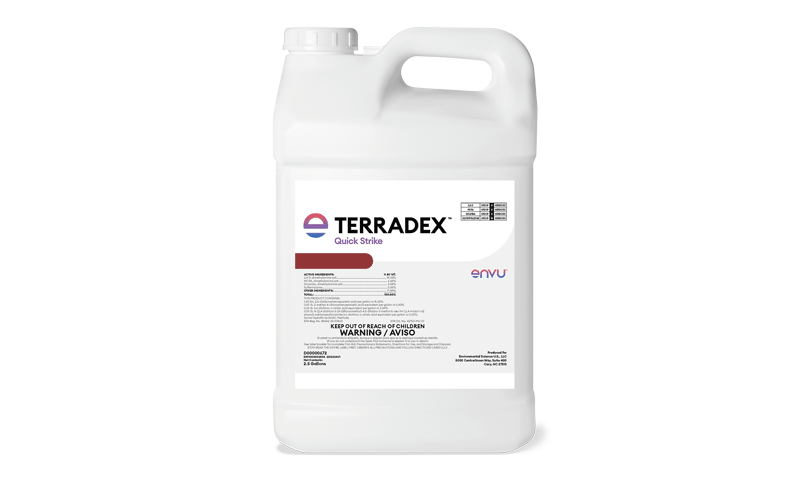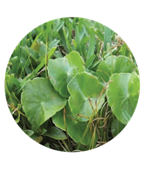The Problem
Virginia buttonweed (Diodia virginiana) is a mat-forming, spreading, deep-rooted, perennial herb with hairy, branched stems from a woody rootcrown. It has multiple means to reproduce, including above and below ground, self-pollinated seed, plus regeneration from stem and root fragments. Hand removal is often ineffective as root or stem fragments typically remain, and the plant can further spread from mowing or string trimmer clippings. Due to Virginia buttonweed’s prostrate growth habit, it can also withstand mowing heights as low as 0.5 inch.
What To Look For
Virginia buttonweed leaves are opposite, elliptic to lance-shaped, sessile (attached directly to the main stem), and joined across their stems by a membrane with a few “hair-like” projections. Leaves initially are dark green and shiny (waxy), but often become yellowish and mottled by a virus in late summer. Unfortunately, the virus does not significantly control or slow the spread of the plant. Leaves root at their lower nodes, allowing large mats to eventually form. White tubular flowers with four lobes, at each leaf axil along the stem, form a fourpointed star shape. Flowers usually have only two sepals and bloom in summer. Fertile subterranean flowers also are produced. Fruits are green, elliptically-shaped, hairy, ridged and at each leaf axil. Seeds are buoyant, thus, easily spread by water. Virginia buttonweed favors moist to wet sites in woods, marshes and wet turf.
Poorjoe (D. teres) is similar to Virginia buttonweed, but is a summer annual with coarse, reddish, hairy stems that grows erect to 12 inches tall when not mowed. Poorjoe leaves are opposite, thin, narrow, and pointed, and flowers have 4 sepals. Florida pusley (Richardia scabra) also resembles Virginia buttonweed; however, it is a summer annual and its leaves and stems are densely hairy, and flowers are 6-parted, not 4-parted as with Virginia buttonweed.
The Solution
Virginia buttonweed is a difficult-to-control broadleaf weed due, in part, to its varied means of reproduction, perennial growth cycle and waxy leaf coating which alters plant penetration for many herbicides. Preemergence herbicides often provide poor control. Key Envu solutions for postemergence control include Tribute® Total, Celsius® WG, and Celsius® XTRA.
Celsius WG contains a sulfonylurea herbicide, iodosulfuron, plus dicamba, along with thiencarbazone-methyl. Single applications of Celsius WG typically provide about 80% control, while two applications are often needed for complete control.
In addition to bermudagrass and zoysiagrass, Celsius WG may be used in centipedegrass and St. Augustinegrass. Celsius WG also controls doveweed, spurge, carpetgrass and many other troublesome weeds.
Tribute Total contains the sulfonylurea herbicides, foramsulfuron and halosulfuron-methyl, as well as thiencarbazone-methyl. It can be used on bermudagrass and zoysiagrass, and also controls Poa annua, goosegrass, clumpy ryegrass and many additional broadleaf and grassy weeds, as well as sedges and kyllingas.
Celsius XTRA contains the sulfonylurea herbicides iodosulfuron, thiencarbazone-methyl, and halosulfuron. Two applications of Celsius XTRA are needed for control of Virginia buttonweed and it will also control sedges and many other problematic broadleaf weeds.
Apply Celsius WG, Celsius XTRA, or Tribute Total in the spring when growth of Virginia buttonweed is apparent, and repeat when regrowth occurs, usually in approximately four weeks. Do not apply either product on or adjacent to desirable cool-season turf. Both products can be applied as a broadcast spray or spot treatment.
Additional resources
| Solution sheet - Virginia buttonweed |







